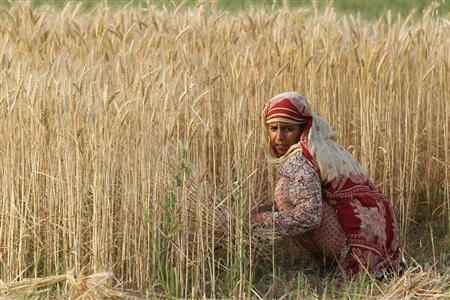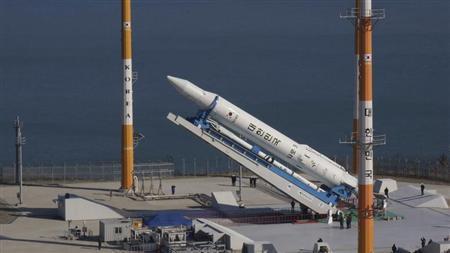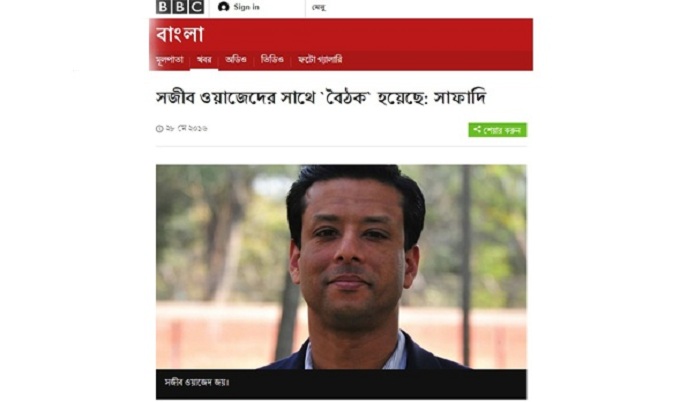 In flood-hit fields in the Philippines, farmers are testing a hardy new variety of rice that can survive completely submerged for more than two weeks.
In flood-hit fields in the Philippines, farmers are testing a hardy new variety of rice that can survive completely submerged for more than two weeks.
In Kenya’s Kibera slum, poor urban families are turning around their diets and incomes just by learning to grow vegetables in sack gardens outside their doors.
And in India, a push to help marginalized rural communities gain title to their land is leading to a significant drop in hunger.
These are just a few of the kinds of innovations and initiatives that experts say will be critical if the world is to feed itself over coming decades as the population soars, cities sprawl and climate change takes its toll.
By 2050, the planet will need at least 70 percent more food than it does today to meet both an expected rise in population to 9 billion from 7 billion and changing appetites as many poor people grow richer, experts say.
“Can we feed a world of 9 billion? I would say the answer is yes,” said Robert Watson, chief scientific adviser to Britain’s Department of Environment and Rural Affairs and a former chair of the Intergovernmental Panel on Climate Change.
But doing so will require fundamental changes to unsustainable but well-entrenched policies and practices, from eating so much meat to spending trillions on agriculture and fuel subsidies, he said.
In the meantime, many hunger fighters say the answer lies in clever alterations to the way food is planted, watered, harvested, stored, transported, sold, owned and shared.
Many of those changes are already being tested in the world’s farms and fields, in laboratories and government offices, in factories and markets. Some are even speaking of the beginnings of a 21st century food revolution.
MYRIAD ‘GREEN BULLETS’
Unlike the last century’s agricultural “Green Revolution”, which dramatically boosted world food production with new high-yielding crop varieties and more irrigation, this revolution must rely on myriad “green bullets” to tackle hunger.
They range from persuading farmers in Africa’s drought zones to switch from water-hungry rice to hardier crops like sorghum or millet, to helping them build pest-proof grain silos that allow food to be stored longer or sold when prices are higher.
With 70 percent of the world’s people expected to live in cities by 2050, finding ways to help city dwellers grow food in small urban plots or roof gardens, or group together to buy food at cheaper prices, is a major focus.
In California’s East Palo Alto, for instance, older inner-city residents – who are particularly vulnerable to high food prices – are learning growing techniques for the first time and producing food for themselves and a neighborhood market.
Other urban areas are turning to vertical hydroponic gardens clinging to the edge of skyscrapers.
Women – who grow at least 40 percent of food in Africa and Asia – will need improved land rights and better access to information, something being made much easier by the spread of mobile phone technology, experts say.
Rural women in India’s Andhra Pradesh state now use advance drought warnings, relayed by Internet and mobile phone, to switch to more drought-tolerant crops — a move that has saved harvests and helped stem the usual wave of migration to cities in drought times.
Changing farming practices by adopting more water-conserving drip irrigation or planting crops amid fertilizing trees, as is now happening throughout Africa, will also be key.
So will cutting the at least 30 percent of the world’s food supply eaten by pests, spoiled on the way to market or thrown away unused from plates and supermarkets.
Simply getting supermarkets to stop offering two-for-one specials – which can encourage people to overbuy – would be a start, some anti-hunger activists say, as would improving roads in regions like South Asia and Africa where transport delays mean produce often rots on the way to market.
Solutions to the threat of worsening hunger will vary by region, by country, sometimes even from one farm or village or apartment building to the next, experts say. Not all ideas will succeed, and scaling up those that do prove to work, as quickly as possible, will be essential.
In a world where an estimated 900 million people are already hungry today, curbing surging consumption in rich nations and those fast getting rich, especially India and China, will be particularly important, experts say.
“If we look at the graph of (rising) human consumption, that’s the one to worry about,” said Phil Bloomer, director of campaigns and policy for Oxfam Great Britain. “That is a graph that should strike panic in our hearts.”
Persuading rich people to eat less meat and fewer milk products, which take a lot of grain to produce, would go a long way toward curbing ever-rising demand for grain.
‘NO NORMAL TO GO BACK TO’
Many innovations focus on easing the adverse effects of climate change on food production.
While warmer weather and growing levels of carbon dioxide in the atmosphere could spur plant growth and food production in some regions — and open a few northern reaches of the world to farming — many more regions are expected to see worsening losses from droughts, floods, storms, rising sea levels and higher temperatures that can cause crop yields to drop.
“It used to be there was an extreme weather event here or there but we knew that in a year or so things would go back to normal,” said Lester Brown, a food security and sustainability expert, and president of the U.S.-based Earth Policy Institute.
“Now there is no normal to go back to.”
That’s why scientists from Bangladesh to Tanzania are developing new resilient varieties of maize, wheat, rice and other crops that can survive underwater, or with very little rain, or even both extremes in the same season, and still produce a reliable crop.
Other innovators are focusing on the effects of growing water scarcity.
“A substantial amount of our food production worldwide comes from non-renewable groundwater sources, and in the long run that is not sustainable,” said Peter Gleick, a leading water expert and head of the U.S.-based Pacific Institute for Studies in Development, Environment and Security.
In villages where glacier-fed streams are set to become more irregular or disappear in the years ahead, or where flooding from heavy rain is quickly followed by drought, communities are learning to harvest and store water to ensure supplies throughout the year.
They are also developing water-conserving irrigation methods to make what they have available last.
Will all such innovations be enough to feed 9 billion people by 2050? Possibly, say experts, but success will depend on making enough key changes fast enough.
In addition to on-the-ground solutions, those changes will need to include major policy shifts — including potentially a ban on turning grain into biofuel or limits on food speculation.
“Food insecurity and climate change are already inhibiting human well-being and economic growth throughout the world, and these problems are poised to accelerate,” said John Beddington, Britain’s chief science adviser, in a March report by the International Commission on Sustainable Agriculture and Climate Change.
“Decisive policy action is required if we are to preserve the planet’s capacity to produce adequate food in the future.”
Source : Reuters




































